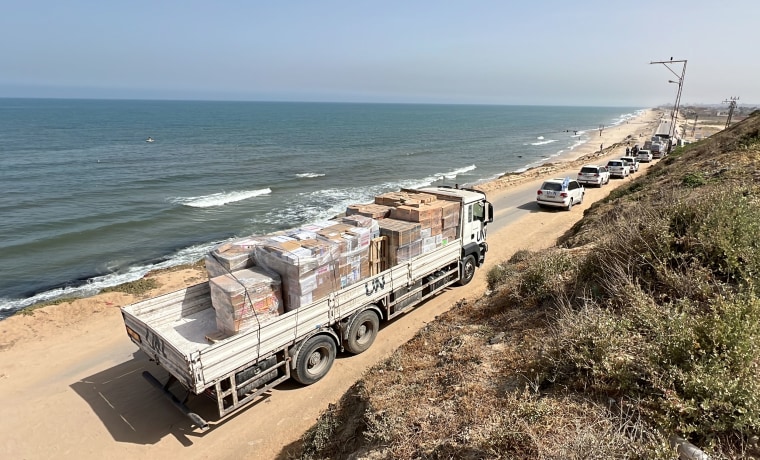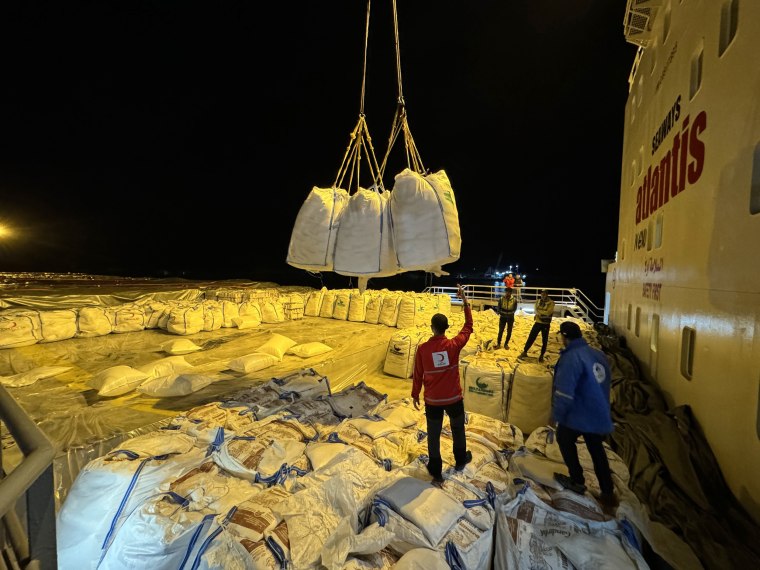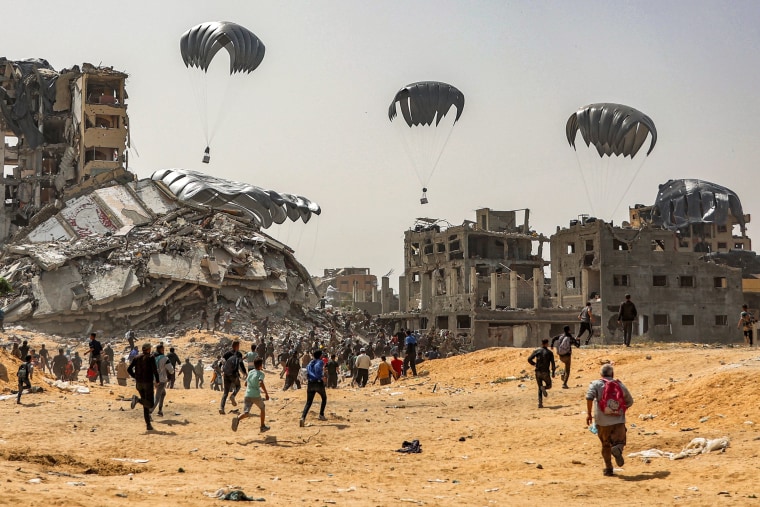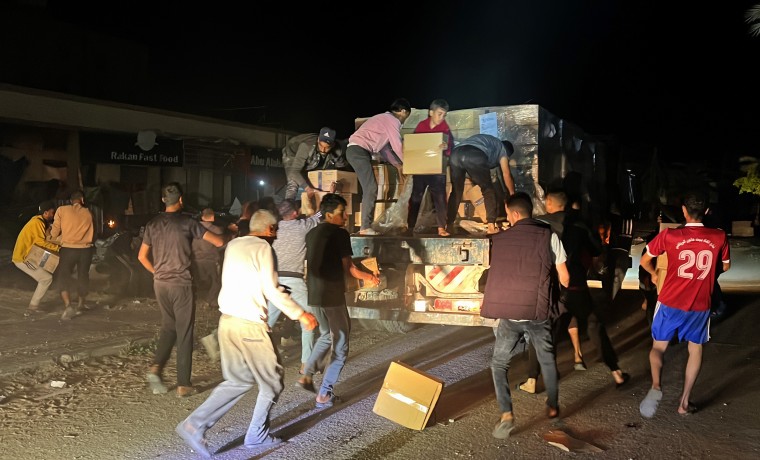After Israeli strikes killed seven World Central Kitchen charity workers this month, sparking global outrage, convoys carrying food and supplies have entered northern Gaza for the first time since the start of the war and there has been a slight uptick in aid entering the besieged enclave.
The increase is “nothing that we’re celebrating,” Ahmed Bayram of the Norwegian Refugee Council charity told NBC News on Sunday. But he said that it was “an indication that diplomatic pressure can work” and that in this case American pressure, in particular, has brought results.
For months, aid agencies have warned that Palestinians in the Gaza Strip were at high risk of famine as children have died of malnutrition and dehydration as Israel has blockaded the densely populated enclave. But last week, the United Nations World Food Program said three convoys carrying food and flour crossed into northern Gaza for the first time since the war began in October through the Erez border crossing in southern Israel.

The deliveries came in the wake of widespread international condemnation of the deaths of the World Central Kitchen workers, who were killed in a series of Israeli drone strikes on their convoy in central Gaza although their vehicles were clearly marked with the charity’s logo and the team had communicated its movements to the Israeli military.
President Joe Biden led the criticism from world leaders, saying in a statement on X that he was “outraged and heartbroken” by the deaths of a U.S.-Canada dual citizen, team members from Britain, Australia and Poland and a Palestinian driver. “This conflict has been one of the worst in recent memory in terms of how many aid workers have been killed,” he said, adding that Israel had “not done enough to protect civilians.”

It also led to rare expressions of contrition from Israeli Prime Minister Benjamin Netanyahu and other officials, and two senior military officers were removed from their posts after the strikes were found to be in violation of protocol. Three days after the strikes, Israel announced that it was opening the Erez crossing and the Ashdod port to speed deliveries into Gaza.
David Satterfield, the U.S. special envoy for Middle East humanitarian issues, said at a news conference Monday that as a result of U.S. efforts in the last six months, “the volume of assistance entering into and, most importantly, distributed within Gaza has increased significantly,” but that more aid was needed.
Data from the U.N. Office for the Coordination of Humanitarian Affairs (OCHA) and the Egyptian Red Crescent, which manages the transfer of aid through Gaza’s southern border, also shows an uptick in aid.
Last week, OCHA data showed daily entries near or over 200 trucks a day. Weekly averages in March were around 160, and in February, the monthly average was slightly below 130, according to OCHA data. Before the war, it said, the average was 500 truckloads of aid, including fuel.

While the U.S., Jordan and several other countries have airdropped aid, experts have told NBC News that they are ineffective because it is difficult to predict where they will land and the supplies rarely reach the most vulnerable. They can also be dangerous because they can fall on people sheltering in the streets or spark stampedes to get to the supplies. World Central Kitchen also delivered almost 200 tons of aid by sea, but it suspended operations after its workers were killed.
The system for getting trucks into Gaza “is still quite sloppy and a little bit willy-nilly,” Georgios Petropoulos, a senior humanitarian affairs officer for OCHA in Rafah, said Saturday. Sometimes, trucks had been held for hours or turned away because of a single restricted item, he said.
When trucks are able to enter the enclave, Petropoulos said, the roads are in terrible condition and the destruction on the ground slows the delivery of aid. A lack of fuel and working vehicles also hampers the process, he said.
Mountains of uncollected garbage and rising temperatures add to the misery, he said. “So what we’re facing here is malnutrition and famine on top of a garbage dump,” he said.
Israel has repeatedly denied its forces were obstructing aid from entering Gaza, where health officials say more than 34,000 people have been killed since Oct. 7, when Hamas launched multipronged attacks on Israel that killed 1,200 people. Last month, Israel’s Coordination of Government Activities in the Territories claimed it had placed “no limit” on the amount of aid allowed into the Strip.
However, all aid for Gaza is subject to strict Israeli security checks aimed at preventing anything that Hamas could use from entering.
Speaking Sunday on NBC News’ “Meet the Press,” Bob Kitchen, vice president for emergencies at the New York-based International Rescue Committee aid organization, said it was “going to take a sustained, huge uplift in aid just to catch up” with the amount of aid required for Gaza’s population of 2.3 million people. “It needs to be a tenfold increase to catch up with the needs that we see,” he said.
“We should have the freedom of movement that we require — and, by law, we enjoy — to distribute aid,” he added. “Everything is needed, and it starts with the fighting stopping.”
Echoing his calls, Bayram of the Norwegian Refugee Council said more diplomatic pressure is needed to open more crossings, increase the amount of aid into the enclave and ensure the security of aid workers.
“We are still miles away from that,” he said.
